Dreams of Hackerphone (and Hackerpade)
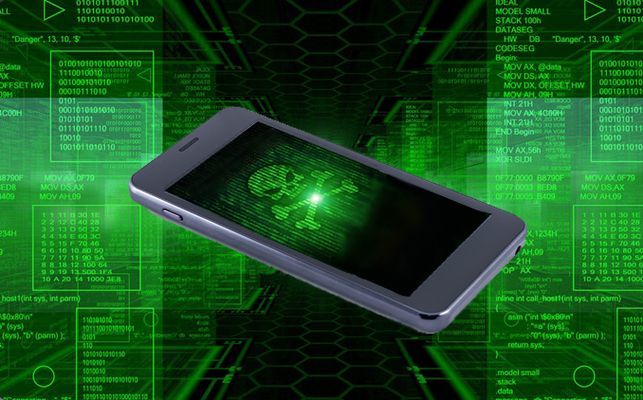
Modern smartphones and tablets, despite all their power and functionality, in general, do not shine with diversity. The same glossy rectangles of glass and plastic, the screen in the whole body, the standard set of hardware features with very small variations ... This is especially acute when you read articles about old iron. Where is all the variety of forms and contents that was once?
Analyzing my notes, I stumbled across several interesting entries about what unusual features in smartphones and plans could be, and decided to combine it all into one article.
This Friday post is dedicated to my vision of the concepts of two devices for real Geeks and Hackers - roughly corresponding to the modern “smartphone” and “tablet” (or rather, “UMPC”).
Hackerphone
Since there will be a lot of stuffing in the device, we will not be limited to the thickness of the device by all means 7 or 8 mm. It is possible and 10, and 15, and even more - it should not confuse us. Our task is to place as many interesting features as possible in the case. And of course for all this you need a powerful battery.
')
Recalling the battery and power as such, I want to point out a couple of important features that are completely absent from modern smartphones. The first is the ability to work on external power (for example USB) without a battery at all. Anything can happen to the battery, but why don't modern devices work without a battery if there is an external power supply? The second option is a removable battery. Now batteries can be generally non-removable, and if they are removable, then you need to open the back cover of the smartphone, which is usually inconvenient. Actually the idea is obvious - to combine the battery and the back cover and make the connection mechanism fast and reliable. On the one hand, there should not be any accidental disconnections in principle, but on the other hand, it should be possible to quickly, in field conditions, “unlock” a depleted battery and attach a spare one.
You can also mention the wireless charging. This is now in fashion - why not? And although for me this is not a matter of principle, undoubtedly there are people to whom this function will be very important.
Let's start with the standard features
and we will gradually move towards non-standard and very non-standard. It is quite natural to expect that on the hackerphone there will be a powerful processor, a lot of RAM, a large amount of flash memory and a slot for a microSD card. Two WiFi modules at once - this can be useful for various purposes, including hacker ones. Bluetooth module, satellite navigation module for work with all types of satellites (there are a lot of them now). Supports all modern mobile standards. Do not be limited to GSM-communication. At least you can add communication modules for modern standards, common in different countries of the world.
Two cameras for photo and video filming - on the back and front. Of course usb (including usb-host). The type of connector is MicroUSB or USB TypeC, and we mean that for some hacker purposes we may need to connect various devices via USB. And if so, then it is quite possible to put several USB connectors - why not? It should also be noted audio output and input (usually on smartphones put only the output or the combined connector in which there is a fourth wire for a microphone).
The operating system is probably for pragmatic reasons it should be Android (simply because there is more software for it), but probably as close as possible to Linux (that is, besides the Android environment itself, there may be a Linux environment around which to run regular Linux programs). Of course, with root-rights.
Sensors . Compass (magnetometer), gyroscope, accelerometer - now it is almost standard. Temperature, pressure and humidity sensor - on many models they also exist. Although these sensors seem small things, but their presence is very nice, and the cost is penny. Also, let's not forget the fingerprint scanner, various biomedical sensors - for example, SpO2 oxygen saturation sensor, heart rate sensor (also known as a pulse meter, heart rate monitor).
Do not forget about the technology of NFC , and should be compatible with all NFC-like technologies. For example, with contactless cards EM-Marine, Mifare, HID.Proximity (as read / write, and emulation). For example, here such cards used as passes in many organizations should be supported. These are intercom sensors - too.
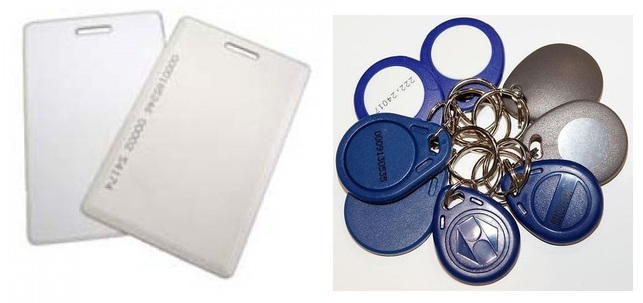
And of course, we will increase the range of operation (both for reception and transmission) and, if possible, open the program control at the lowest level possible: in the future new protocols may appear, it would be good if their support is implemented purely by software, by installing new driver.
Two screens on two sides of the device : LCD + E-Ink or another non-luminous screen (for example, Mirasol ). Yes, the idea is taken from YotaPhone.
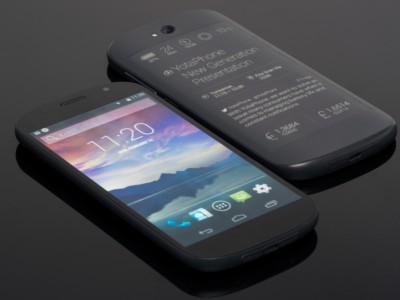
The rear surface of the smartphone is usually not used at all - and this is a great way to use it. Why not?
Multiple SIM cards . Oddly enough, but on the flagship models on the number of places for SIM cards save. I immediately take into account the need for at least two places for sim-mart. Another important detail: GSM-modules must be independent and be able to work simultaneously. It should also be noted the possibility of complete control over the voice path : voice recording, program audio playback in the GSM voice path, switching channels between different sources and receivers (and not only GSM, but also others - we will have a lot of them) with software processing. This is necessary for many important functions - recording telephone conversations, on-the-fly voice over-modulation of the voice patterns, program mixing of various noise from audio files into a conversation, etc.
Infrared receiver and transmitter. It would seem that infrared is already outdated technology. But the control panels of household appliances were and will be infrared for a very long time. Accordingly, having an infrared LED for the transmitter and a photodiode for the receiver is not so difficult. The receiver is mainly needed for memorizing the codes of various remote controls.
Probably, there is another interesting and non-standard application of an infrared receiver and transmitter - a laser microphone. If there is a powerful source of infrared light (I don’t know if a laser is needed here or a sufficiently powerful LED) and a sensitive receiver, you can illuminate the window glass and catch conversations in the room.
Hence the need for programmatic access to the infrared receiver and transmitter at the lowest level (as for the ADC and DAC).
Further, the atypical begins
Thermal imager Here such devices are on sale, and on Habré there were reviews. One , two , three .

But agree, it is much more interesting if such a device is built into the smartphone initially (and I am aware of the price, but we are talking about the concept and not about the price). Of course, there should be a recording of photos and videos from this channel. And of course, such a feature can be found a lot of hacking and just interesting applications!
Three-dimensional scanner . This refers to many well-known famous Project Tango. More details .
Technically, as follows from the description, it consists of being equipped with a dual camera, a depth sensor and a motion capture sensor. Real devices are already on sale . Of course, there is no way to get past such an elegant opportunity. So let it be.
Counter Geiger / dosimeter / radiation sensor
Surprisingly, a smartphone with a radiation sensor already exists (and perhaps not the only model). After the accident at Fukushima, the Japanese began to make such smartphones. In principle, the sensor as a sensor, with the proper level of sensitivity is quite a useful thing. I do not know exactly how the Japanese implemented it, but looking at the dimensions of the sensor of household dosimeters, it may seem that it is too big for the dimensions of a smartphone. In this case, this sensor is quite possible to build into the next concept - Hackerpad.
Universal chemical analyzer / spectroscope . Here is an example of the device . The general idea is to highlight the analyte with special LEDs and analyze the reflected spectrum. Of course, such a device would be useful in many cases.
Unfortunately, this technology has not been sufficiently ported to mobile devices (and is simply not sufficiently developed in the mobile device version, and it is unclear whether the development will be), so the accuracy leaves much to be desired. But in general, this direction is very attractive, so I will just mark it in the general list.
Satellite telephony and Internet . Smartphones supporting satellite communications work, but rarely. The main problem - the size of the satellite dish is too large to integrate it into modern ultra-thin smartphones. Therefore, satellite phones are usually made in a classic and even somewhat old-school form factor. There is also an alternative (but essentially crutch) solution - an iPhone case with satellite support. Of course, such things will not be built into smartphones for most consumers (or not very soon). But we have the hackerphone, and give up such an opportunity for the sake of some kind of thickness ...
DECT telephony module . It would be interesting to connect your smartphone to your home and office telephone network on DECT! Googling, made sure that everything has already been invented before us . The opportunity is interesting, let it be on our list.
Electromagnetic Radiation Sensor . There are such devices to search for hidden wiring and cables. Quite an interesting class of devices with a simple scheme. Another similar class of devices is the actual detectors of the electromagnetic field, they have several sensors arranged orthogonally. The presence of such functionality (perhaps even in some advanced version) would be quite appropriate in the hacker device - at least to search for the same hidden cabling. Perhaps even more appropriate than meteorological and medical sensors.
Various TV and radio tuners (digital, analog) . FM radio is quite common in smartphones. Analog TV tuners are sometimes found (and even work) in Chinese smartphones. For the reception of digital TV there is for example such a device connected via USB.
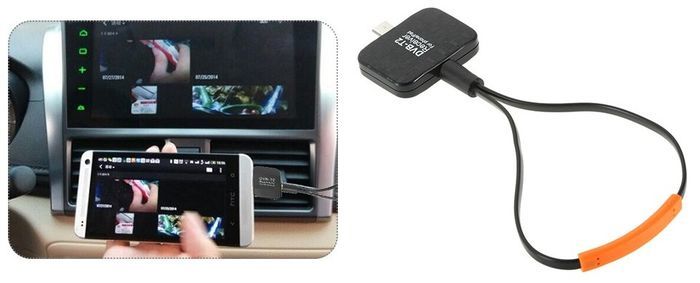
I consider it an important opportunity to integrate audio and video streams into the overall smartphone system. That is, it should be possible to record audio and video, as well as redirect and program mix them.
Hacker radio module . Here we logically came to the climax. Why make separate modules for receiving and transmitting various data, all kinds of radio TV and radio tuners, when you can make a universal digital program-controlled transceiver? Yes, hardware accelerators-extenders, sharpened specifically for encoding and decoding of specific protocols — say, mobile communication or television — can be attached to it.

The photo shows the HackRF board (and lots of articles including on Habré). It is a digital SDR receiver and transmitter operating in a wide frequency range, covering almost all modern radio technologies. With the help of a similar scheme built into our Hackerphone, we could have such functions as a wideband radio scanner, radio, the above mentioned radio and TV tuners, a pager (I don’t know if there is a paging connection now, but the software implementation of this function should to be simple - at one time there were even programs for intercepting paging messages that worked with analog TV tuners), software support for various radio communication and data transmission standards, including obsolete and rarely used ones, is not implemented standard cellular network capabilities (such as sending packets generated by software) and even emulating a cellular base station.
There is one important aspect: the number of receivers and transmitters (that is, the number of radio channels capable of operating simultaneously). Of course, you can’t cram a lot into a small smartphone case: so you have to sacrifice something. It is logical that the basic functions of a smartphone (mobile communication) should remain basic, and the additional ones can be combined in such a universal transceiver. I would certainly refer various FM and TV tuners to the class of additional peripheral devices. If there is not enough free volume in the case, the DECT module can also be included here.
Hackerpad
The second concept is a bigger device. Approximately the corresponding tablet or UMPC is not a laptop yet, but no longer a smartphone (by the way, you can consider the third concept - hackerbuk, but in general there will be nothing to add compared to hackerpad). So what will be in it?
All that is in the "hackerphone" . Yes, why should we give up already existing features - both the size of the case and the battery completely allow us not to give up anything. We will add new ones.
Form factor The most interesting thing in our hypothetical device is an unusual form factor. This is the presence of a hardware keyboard , and more importantly, its placement. I took the Samsung Q1 Ultra UMPC as a basis.
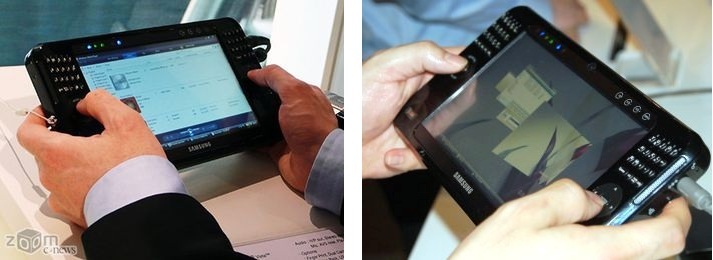
Please note - the keys are located on two sides of the device. This is the perfect location to type with two hands while holding the device as a game console.
It should be noted that the planned size of the Hackerpad should be larger than that of the Q1 Ultra - it makes sense to place there at least a 9-inch display, because the more information we can place on the screen, the more comfortable it will be to use the device. Of course there are some limits, but the ideal for me is the size of the “big tablet”. However, nothing prevents the release of a small version - but this will most likely lead to a decrease in the size of the keys and the distance between the keys, which can create certain inconveniences.
By analogy with Hackerphone, Hackerpad will also have two screens on both sides - plain and electronic paper. Reading books and viewing websites on the street on a bright sunny day will be more convenient from the electronic-paper screen. This means that the buttons can also be made two-sided. In addition, I saw some variants of the “overhead” keyboards for smartphones that have buttons on the opposite side — perhaps this is convenient. The price of the second set of buttons is cheap. Of course, it will be possible to block one or another keyboard at will.
Keys with sensory sensitivity . This is a very interesting concept, which I borrowed from the camera of the same Samsung company. Buttons are sensitive not only to pressing, but also to touch without pressing. How can this be applied? For the convenience of printing text: when you touch the button, the corresponding symbol appears in the input forum in a “semi-transparent” form as a hint. Thus, a person can type text very quickly and without mistakes at all, without looking at the keys at all.
I don’t know if this functionality is implemented anywhere else, the idea with a hint when entering text is my original one (in the camera, touch is used to highlight menu items, and pressing is used to select).
Ethernet module Generally speaking, the Ethernet module is on almost all microcontrollers used as processors in smartphones. And there is a wired network in any home and office. The main problem is that the RJ-45 connector is too big for a mobile device. But there is a solution: the photos show examples of folding RJ-45 connectors that are actually used on some thin laptops.

Since we are not pursuing the minimum thickness, and our main goal is to add as many features as possible that can be claimed by Geeks and Hackers, then of course the ethernet port should be. And it makes sense to make such ports not one, but two.
Wired telephony module . Yes, the good old wired phone is alive and will still live. For a very long time, at least for decades. In homes, offices, hotels, enterprises have been, are and will be urban, and often local telephone networks. Therefore, it is impossible to pass by this technology.
The RJ-11 connector is smaller, but if necessary it can be made “foldable” in the same way as an RJ-45 connector.
So, in case you need to connect to the telephone network and perform some non-trivial actions, a voice-modem module must be provided in Hackerpade. Actions - for example - to call somewhere and play the conversation with a voice simulated by a special software. Or record the conversation. Or programmatically send a fax.
Or simulate some kind of modem device. Or switch the two lines in a cunning way. Yes, if the dimensions will allow, such modules also makes sense to make two pieces. Of course, both voice and digital path must be fully accessible programmatically.
Digital oscilloscope, logic analyzer and analog and digital signal generator . If a programmable SDR is a universal tool for working with radio, then the idea here is a universal tool for working with wired signals. The title of a hacker device implies something special, and if it would hardly fit into the body of a smartphone, then it would be fine with UPMC. Of course, what I call a “digital oscilloscope”, for obvious reasons, will not make it to professional devices. It is rather an implementation conceptually close to “USB oscilloscopes”. But in the field, these opportunities should be enough in abundance.
Of course, both recording and playback of signals by software is provided. By the way, a similar idea (albeit in a simplified form) is implemented in such a homemade tablet - the GPIO ports are routed to an external connector.
On this, perhaps on this I will complete this Friday post. Maybe I forgot or missed something, but there seems to be collected here almost all interesting concepts and extensions of the functionality of mobile devices that I came across. Unfortunately, such devices are most likely never to be born, unless the Community forces ... Some extensions are too expensive (a thermal imager), someone will say that most of these functions are not needed ... But surely there will be those who would not refuse to have similar devices. In general, I invite you to discuss :)
Source: https://habr.com/ru/post/400903/
All Articles